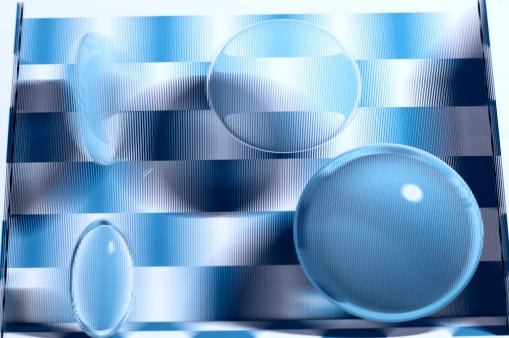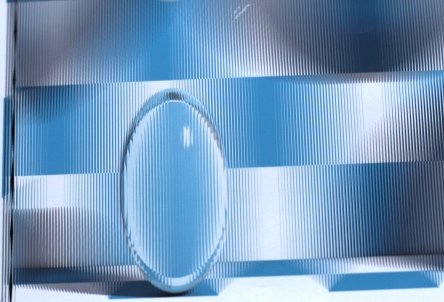In this second post about my 'Steem Powered Kickstarter Project: Autostereoscopic Images', I'll explain why I think this project is so cool and why it's worth your upvote! Please see my previous post for a short introduction and why I choose Steemit to try to fund this project.
"So... what actually ìs an autostereoscopic image?" I think that question needs to be answer first. An autostereoscopic image is an image that shows a three dimensional object in/on a flat surface without the need of any special glasses. And in addition to that, the viewer is also free to move around the object to view the object from any angle he/she desires. Because of this, it's also possible that the object is being viewed by multiple viewer, who each see their own perspective of the object. All in 3D. A famous and old example of an autostereoscopic image is the hologram of which I talked about in my introduction post.
But in this kickstarter project, I want to take a different approach to make an autostereoscopic image. The idea is to make a 'light field' image, using a sheet containing many small optical lenses.
In a normal image, any dot in the image sends a color in all directions. No matter from which direction you look at the dot, the color stays the same. But in a light field image any dot can send a different color for any and each direction. For example, when looking at that dot with your left eye, you might see a red color. But when looking at that same dot with your right eye, you might see a green color! With this principle its possible to encode depth information in each dot, resulting in a truly stunning autostereoscopic image!
Take a look at this example I made:
Four-frame-animation of a flat image showing a 3D scene
The short animation above shows four photos. In each photo you see the same flat image, but because each dot sends a different color of light in each direction, a sense of depth can be created. In this case, I used a lenticular lens sheet that I put on top of a very carefully rendered image. The image below shows a schematic view of an lenticular lens sheet. And the two following images show the 'raw' image that I put behind the lenticular sheet.
Lenticular sheet (source)
Image without lenticular sheet.
Detail of image without lenticular sheet.
These last two images look very weird without a lenticular lens sheet on top of them, but when putting the lenticular sheet on top a stunning 3D image is reviled!
Now, this example looks spectacular in my opinion (looks much better when seeing it with your own eyes, believe me :D), but the effect is limited. You can only move your head from left to right to see the 3D effect. If you move your head up and down, nothing changes. That's because this example uses lenticular sheets, which has only tube-like lenses in one direction. The example movie in my introduction post however uses a two-dimensional lens array, allowing for a true light field effect! This makes that stereo effect is always visible, no matter if you move left or right, up or down, or even rotating your head or putting the image upside down! But what is even more spectacular, is that you can focus with your own eyes on any object in the 3D scene of the image! Objects closer and further away look blurry, but the object you focus on is perfectly sharp! This is not the case with any of the 3D movies in the cinema or any of the 3D headsets that are popular these days, like the Oculus Rift or the HTC Vive. They all force you to focus on one particular point in the image. But having the freedom of choosing yourself where to look at makes the 3D experience so much more immersive! I hope I convinced you now why we need to develop this technology and get this in our lifes!
In my following post, I hope to explain a bit more about the current status of my light field autostereoscopic images and show the limitation that I'm facing at the moment.
See you in the next post! Until then, please upvote this post so that I can get this project funded.




keep posting....
Would love to see this in person. I've always been fascinated by holograms and other 3D images that don't require anything over your eyes to see.